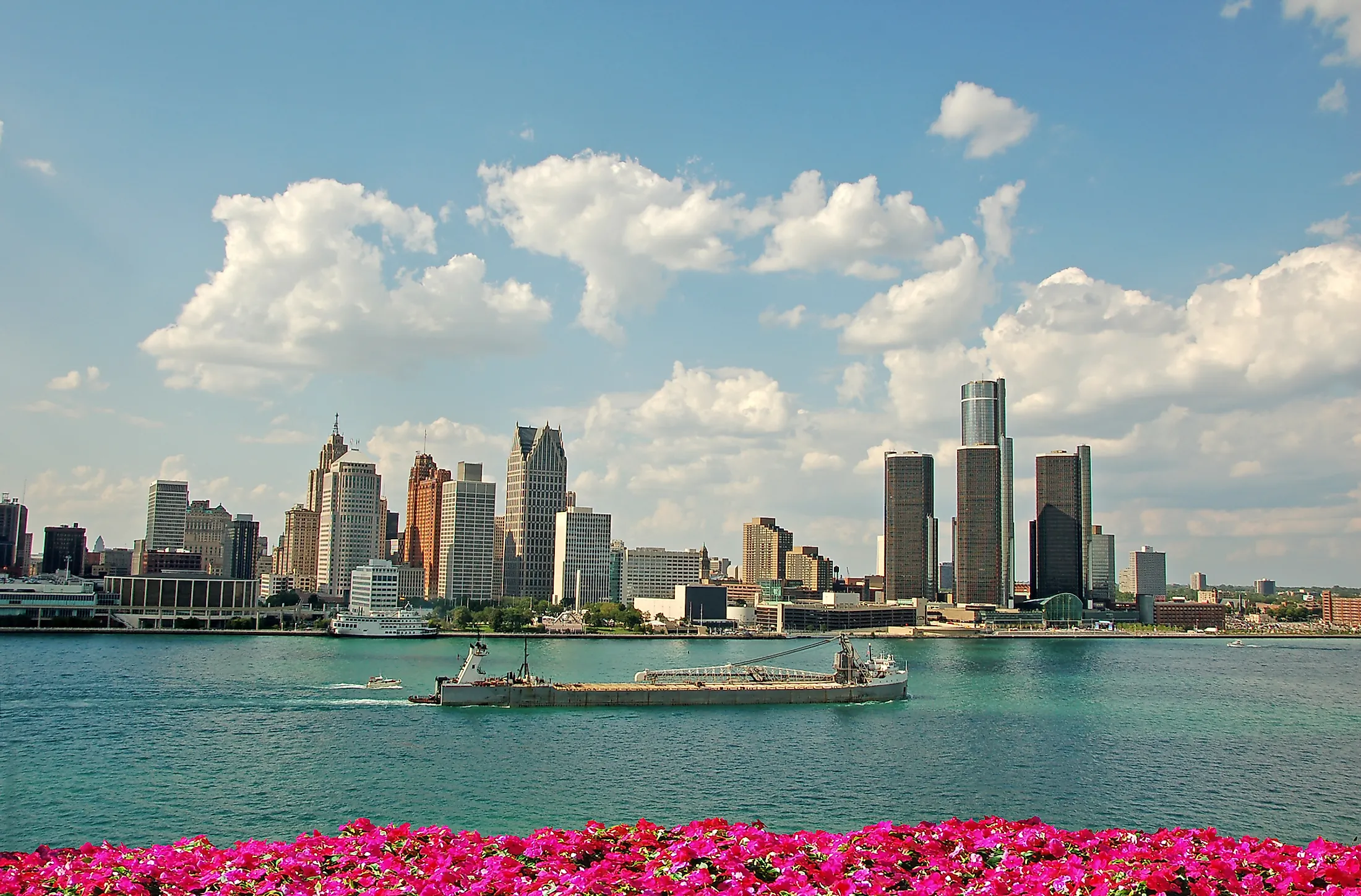
Detroit River
As one of the world’s busiest waterways, the Detroit River has had a profound impact on the region and Detroit’s overall development. The 24-mile-long river is the only one to have the dual designation of an American Heritage River and a Canadian Heritage River. Moreover, the Detroit River is a pivotal symbol of hope and international relations for the region’s residents, given its ease of transportation.
Geography And Flow Of The Detroit River
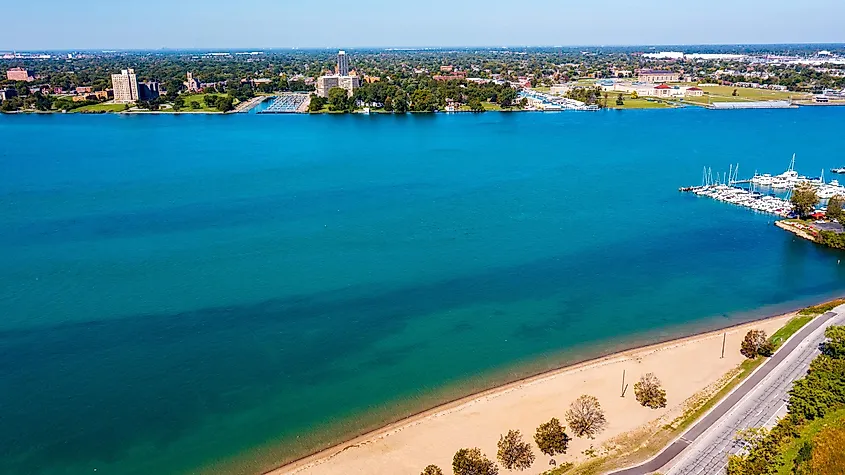
Forming the international border between the US and Canada, the Detroit River connects Lake St. Claire in the north to Lake Erie’s west end in the south, making it a key part of the Great Lakes system. As such, the river forms the boundary between Ontario, Canada, in the east and Michigan, US, in the west. The US side of the river is under the administration of Wayne County, Michigan. On the other hand, Canada’s side of the river is under the jurisdiction of Essex County, Ontario. The international transborder agglomeration of Detroit-Windsor has its major metropolitan areas of Detroit, Windsor, Michigan, and Ontario divided by the river as well. The vast majority of the human population along the river lies in Michigan, with Detroit serving as the largest city along its banks.
Since it acts as a narrow passageway between two sizeable water bodies, the river can also be classified as a strait. Due to this classification, the Detroit River was initially named the “River of the Strait” by the region’s initial French settlers. The river is approximately 0.5 to 2.5 miles wide, highlighting just how narrow the division between Michigan and Canada is. Furthermore, the Detroit River flows from Lake St. Claire with an east to west flow. However, the river bends further down its course and flows north to south towards Lake Erie. Commencing at an elevation of 574 feet above sea level at its source, the river only drops three feet upon reaching Lake Erie. The river’s northern portion records its greatest depths at approximately 53 feet. Given its overall short length, the river contains very few tributaries. The largest of the existing tributaries is Michigan’s River Rouge, which actually contains much of the basin and flows at a length that is four times longer than the Detroit River itself. The tributaries on the Canadian side include River Canard and Little Creek.
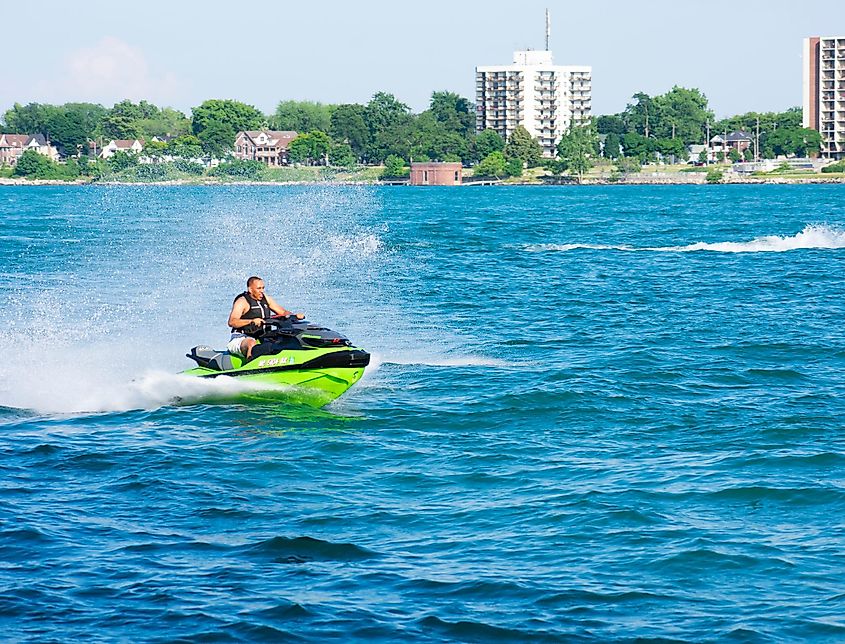
The river also includes several islands, each of which is operated and owned on the basis of its geographic location. With none of the islands separated by the international border between the US and Canada, most of the river’s islands lie on the American side. These islands also vary in terms of their use, with most of the islands being uninhabited. For instance, Belle Isle is one of the river’s largest islands and is used entirely as a city park in Detroit. On the other hand, Grosse Ile, another one of the river’s largest islands, is a residential area and even includes an airport.
Brief History Of The Detroit River And Its Economic Development
During the early days of America’s colonization, a native tribe known as the Iroquois would use the river to travel and trade fur with Dutch colonists. As previously mentioned, the Detroit River was at first named “Rivière du Détroit” by the initial French settlers, which literally translates to “River of the Strait.” Since the early 1700s, the river was used as a major shipping channel, with traders frequently navigating the river for trade. At the turn of the 20th century, the Detroit-Windsor area underwent rapid industrialization due to its significant transportation impact on forging the economies of both nations. In fact, this era experienced a boom so profound that Detroit News referred to the river as the “Greatest Commercial Artery on Earth” in 1908.
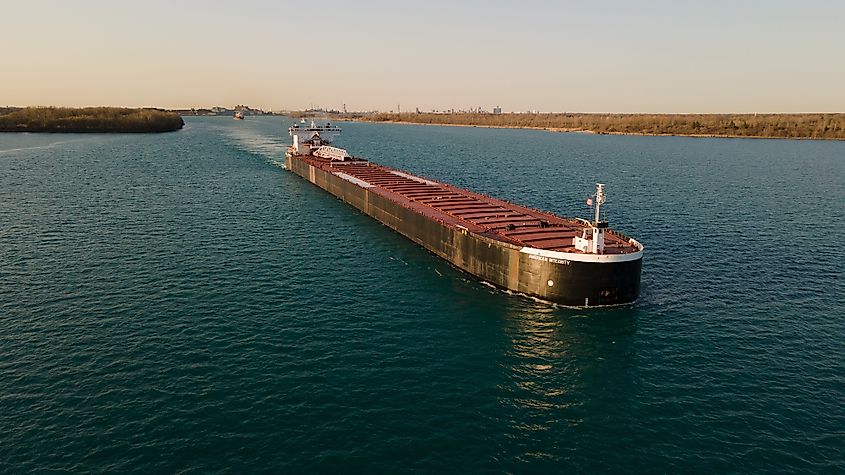
However, this rapid development came at a serious ecological detriment, as the river became notoriously toxic and polluted. This was a direct result of urbanization, sewer overflows, and toxic contaminant overflows. The accumulation of such toxins produced severe issues in the endemic wildlife populations. With such a heavy impact on local wildlife, it was only a matter of time before the subsequent impacts on human health became more apparent. In turn, a prompt and strong response was elicited from the people, whereby a massive conservation effort to clean the river took place in the 1970s and 1980s. Given the local community’s response to restoring the environment, preserving history, and ultimately revitalizing the economy, President Bill Clinton designated the Detroit River as one of the 14 American Heritage Rivers in 1997.
Ecological Diversity Of The Detroit River
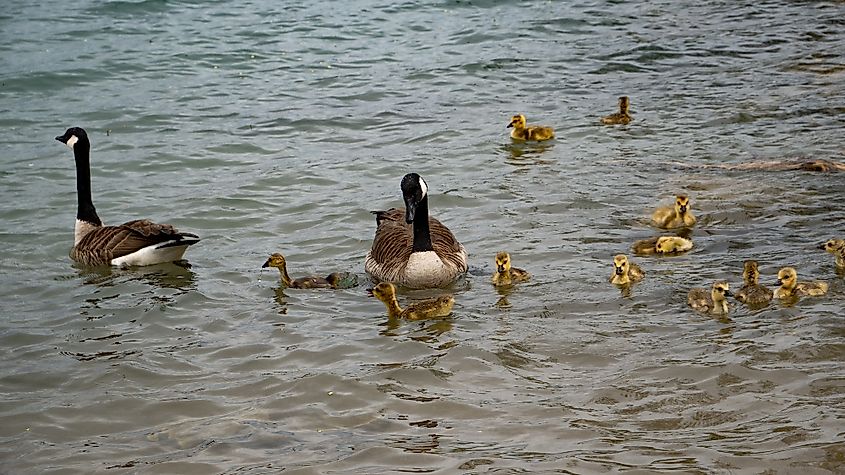
The Detroit River is currently North America’s only international wildlife refuge. After the tremendous effort put in to restore the river’s vital ecosystems, the Detroit River International Wildlife Refuge currently supports an incredibly diverse list of species. The refuge’s protected areas offer sanctuary to a plethora of birds migrating annually, with approximately 300 species of birds recorded. Of these species, at least 23 are raptors, 31 are shorebirds, and 30 are waterfowl. In fact, an estimated three million waterfowl migrate through the Great Lakes region annually as a direct result of the focused conservation and water quality measures enacted.
Another species that inhabit the river is the North American lake sturgeon, which attained threatened status due to extensive pollution, overharvest, and migratory waterway loss. Nevertheless, due to the combined efforts of fish biologists at the Detroit River International Wildlife Refuge and the Alpena Fish and Wildlife Conservation Office, the first successful instance of sturgeon reproduction within thirty years in the river was documented in 2001. The population has become increasingly more stable over the years, with Canadian populations successfully reproducing repeatedly since 2009. Another threatened species that dwell within the refuge is the Eastern Fox Snake, an important indicator of a healthy watershed.
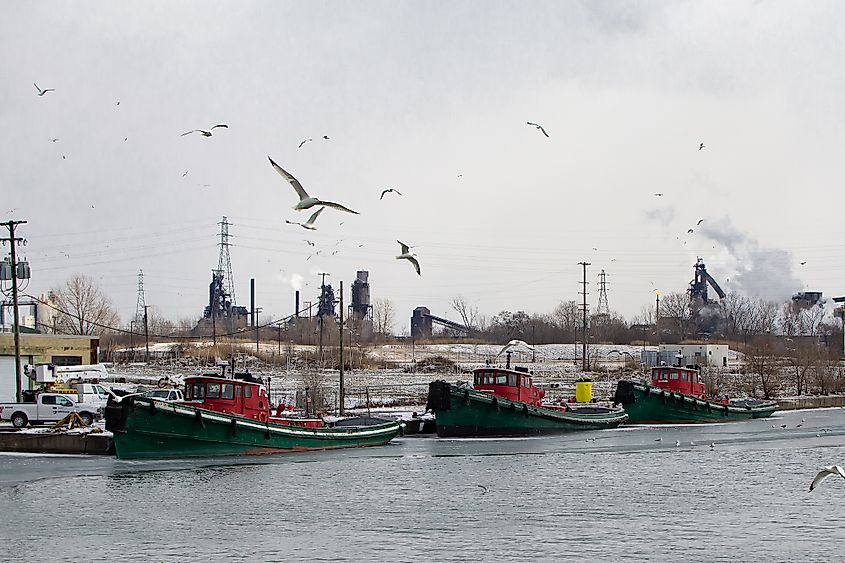
To add, the refuge hosts several globally imperiled habitat types. These include the Great Lakes marsh, which is composed of wet meadows, emergent marshes, and submergent marshes, all of which heavily depend on water level fluctuation. Of these habitats, perhaps the most diverse is the Lakeplain wet prairie, as it is considered a transition zone between wetland and upland areas. When it comes to forests, an uncommon type that the refuge includes is the wet-mesic flatwoods, which is exclusively situated on poorly drained glacial soils. The abundant oak, ash, and maple tree species found within these forests offer indispensable cover and stopover habitat for migrating songbirds.










